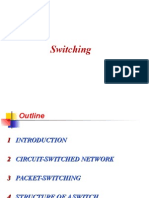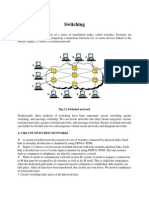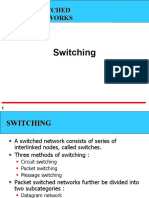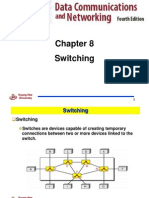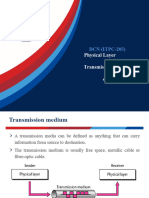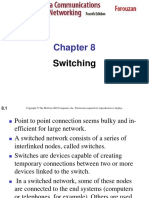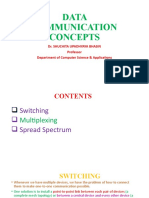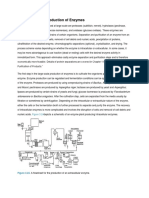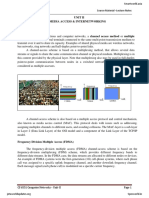0% found this document useful (0 votes)
113 views27 pagesPhysical Layer:: Switching
This document discusses different methods of switching in computer networks, including circuit switching, packet switching, and message switching. It describes how switching can occur at the physical, data link, and network layers. Circuit switching establishes a dedicated connection for the duration of communication, while packet switching involves dividing messages into packets that are sent independently through a network and may follow different routes. Packet switching can use either a datagram approach, where each packet is independent, or a virtual circuit approach, where packets for a connection follow a predetermined path through the network.
Uploaded by
PKSachanCopyright
© © All Rights Reserved
We take content rights seriously. If you suspect this is your content, claim it here.
Available Formats
Download as PDF, TXT or read online on Scribd
0% found this document useful (0 votes)
113 views27 pagesPhysical Layer:: Switching
This document discusses different methods of switching in computer networks, including circuit switching, packet switching, and message switching. It describes how switching can occur at the physical, data link, and network layers. Circuit switching establishes a dedicated connection for the duration of communication, while packet switching involves dividing messages into packets that are sent independently through a network and may follow different routes. Packet switching can use either a datagram approach, where each packet is independent, or a virtual circuit approach, where packets for a connection follow a predetermined path through the network.
Uploaded by
PKSachanCopyright
© © All Rights Reserved
We take content rights seriously. If you suspect this is your content, claim it here.
Available Formats
Download as PDF, TXT or read online on Scribd
/ 27
